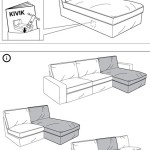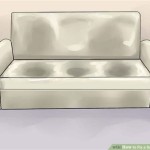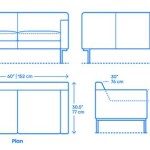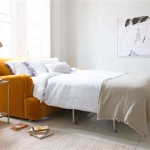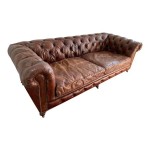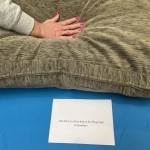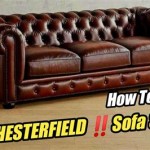The Enduring Appeal of the Cottage Lane Sofa Table
The Cottage Lane sofa table represents a prominent furniture style, characterized by its blend of rustic charm and practical functionality. Positioned strategically behind sofas or against walls, these tables serve as both decorative focal points and convenient surfaces for everyday items. The design aesthetic draws inspiration from traditional cottage living, incorporating elements like distressed finishes, natural materials, and simple, clean lines. This article explores the key features, design elements, and practical considerations associated with Cottage Lane sofa tables, providing a comprehensive understanding of their enduring appeal in contemporary homes.
Key Features and Design Aesthetics
Cottage Lane sofa tables distinguish themselves through a series of defining characteristics. These tables often incorporate a distressed or aged finish, simulating the wear and tear associated with well-loved antique furniture. This effect is typically achieved through techniques like sanding, paint chipping, and the application of antiquing glazes, resulting in a piece that exudes a sense of history and character. Furthermore, the use of natural materials is central to the Cottage Lane design philosophy. Wood, particularly reclaimed timbers, is a common choice, often showcasing visible wood grain and knots, adding to the rustic appeal. Metal accents, such as wrought iron legs or drawer pulls, are also frequently incorporated to create visual contrast and enhance the overall durability of the table.
The color palette associated with Cottage Lane furniture tends to favor neutral tones, such as whites, creams, grays, and soft blues. These colors contribute to the airy and welcoming atmosphere characteristic of cottage style interiors. While bolder colors may be present in accents or accessories, the primary furniture pieces typically remain within this muted spectrum. The design leans towards simplicity and functionality, avoiding excessive ornamentation or intricate detailing. Clean lines and straightforward shapes are favored, creating a versatile piece that can seamlessly integrate into a variety of interior design schemes. These features combine to create a sofa table that is both aesthetically pleasing and highly practical.
The height of a Cottage Lane sofa table is a crucial design element. Typically, the table should be approximately the same height as the back of the sofa or slightly lower. This ensures easy access to items placed on the table and maintains a visually balanced arrangement. The length of the table should ideally span at least two-thirds the length of the sofa, providing ample surface area for lamps, books, decorative objects, and other personal items. The depth, or width, of the table is also a consideration, generally ranging from 12 to 18 inches to allow sufficient space for placement without obstructing walkways or overwhelming the surrounding area.
Materials and Construction
The selection of materials plays a significant role in the quality and longevity of a Cottage Lane sofa table. Solid wood construction is highly valued for its durability and aesthetic appeal. Common wood types include pine, oak, maple, and birch, each offering its unique grain patterns and characteristics. Reclaimed wood, sourced from old barns, factories, or other structures, adds an element of sustainability and historical significance. The use of solid wood ensures that the table can withstand daily use and maintain its structural integrity over time. Alternatively, some Cottage Lane sofa tables may utilize engineered wood products, such as MDF or plywood, particularly for larger surfaces. These materials offer greater dimensional stability and can be finished to mimic the appearance of solid wood.
The construction techniques employed in building a Cottage Lane sofa table are essential for its overall quality. Traditional joinery methods, such as dovetail joints, mortise and tenon joints, and tongue and groove joints, provide superior strength and stability compared to simpler methods like screws or staples. Drawer construction is another critical aspect to consider. Dovetail joints in the drawer corners indicate a higher level of craftsmanship and ensure that the drawers will operate smoothly and reliably. The finish applied to the table is also vital to its longevity and appearance. A durable finish, such as lacquer, varnish, or paint, protects the wood from moisture, scratches, and other damage. The finish also contributes to the overall aesthetic, whether it is a distressed, painted, or stained appearance.
Metal components, such as legs, hardware, or decorative accents, should also be of high quality. Wrought iron is a popular choice for its strength and rustic appeal. Powder coating is a common finish for metal components, providing a durable and corrosion-resistant surface. The hardware, including drawer pulls and knobs, should be made of solid metal and securely attached to the table. These elements contribute to the overall durability and aesthetic of the piece.
Incorporating a Cottage Lane Sofa Table into Interior Design
The versatility of the Cottage Lane sofa table allows it to be integrated into a wide range of interior design styles. While it is most commonly associated with cottage and farmhouse aesthetics, it can also complement transitional, eclectic, and even some modern spaces. The key is to consider the overall color palette, textures, and furnishings in the room to ensure that the sofa table seamlessly blends in with the existing décor.
In a traditional cottage-style living room, a Cottage Lane sofa table can be paired with upholstered sofas in floral prints or neutral fabrics, along with vintage-inspired accessories such as antique lamps, woven baskets, and botanical prints. The distressed finish and natural materials of the table will complement the overall cozy and inviting atmosphere. In a farmhouse-style setting, the sofa table can be combined with rustic wood furniture, exposed brick walls, and industrial-inspired lighting fixtures. The table's simple lines and neutral color palette will provide a counterpoint to the more rugged elements of the farmhouse style.
For a transitional space, which combines elements of traditional and contemporary design, a Cottage Lane sofa table can be used to add a touch of warmth and character. It can be paired with streamlined sofas in neutral colors, along with modern artwork and accessories. The table's rustic details will soften the overall look and prevent the space from feeling too sterile or impersonal. In an eclectic interior, where different styles and eras are mixed and matched, a Cottage Lane sofa table can serve as a unifying element. Its neutral color palette and simple design will allow it to blend in with a variety of different furniture pieces and accessories. The table can also be used to add a touch of rustic charm to a more modern space, creating an interesting contrast between the clean lines of the contemporary furniture and the aged appearance of the table.
Practical Considerations: Functionality and Placement
Beyond its aesthetic appeal, the Cottage Lane sofa table offers a range of practical benefits. It provides a convenient surface for placing lamps, books, drinks, and other items within easy reach while seated on the sofa. This can be particularly useful in living rooms or family rooms where people spend a lot of time relaxing and entertaining. The table also provides an opportunity to display decorative objects, such as vases, picture frames, and sculptures, adding personality and visual interest to the room.
The placement of the sofa table is crucial to its functionality and visual impact. It should be positioned behind the sofa, leaving enough space for people to walk comfortably between the table and the wall. The height of the table should be approximately the same height as the back of the sofa or slightly lower, ensuring easy access to items placed on the table. The length of the table should ideally span at least two-thirds the length of the sofa, providing ample surface area for placement. In addition to placing the sofa table behind a sofa, it can also be used against a wall in a hallway or entryway. In this case, it can serve as a console table for displaying decorative objects or holding mail and keys.
When selecting a Cottage Lane sofa table, it is important to consider the size of the room and the other furniture pieces in the space. A large, bulky table can overwhelm a small room, while a small, delicate table may get lost in a large room. The table should also be proportional to the size of the sofa. A long, low sofa will typically require a longer sofa table, while a shorter, higher sofa can be paired with a shorter table. Finally, it is important to choose a sofa table that is made of durable materials and is well-constructed. This will ensure that the table will withstand daily use and maintain its appearance over time.
Storage and Organization
Many Cottage Lane sofa tables are designed with built-in storage solutions, adding to their practicality. Drawers, shelves, and cabinets provide convenient space for stashing books, magazines, remote controls, and other items that tend to accumulate in living rooms. This helps to keep the space tidy and organized, while also providing easy access to frequently used items. The drawers should operate smoothly and be constructed with durable joinery. The shelves should be sturdy enough to support the weight of books and other items without sagging or warping. The cabinets should have doors that close securely and provide ample storage space.
When choosing a Cottage Lane sofa table with storage, it is important to consider the type of storage that is most needed. Drawers are ideal for storing small items that need to be kept out of sight, such as remote controls and keys. Shelves are perfect for displaying books, magazines, and decorative objects. Cabinets provide secure storage for larger items, such as blankets, pillows, and games. The amount of storage needed will depend on the size of the room and the amount of clutter that tends to accumulate. It is also important to consider the style of the storage elements. Drawers with rustic hardware and shelves with a distressed finish will complement the overall cottage aesthetic.
The addition of baskets or decorative boxes can further enhance the storage capabilities of a Cottage Lane sofa table. These items can be placed on the shelves or in the drawers to organize smaller items and add a touch of visual interest. Woven baskets are a popular choice for their rustic appeal and practicality. Decorative boxes can be used to store jewelry, stationery, or other small treasures. The use of storage containers can help to keep the space tidy and organized, while also adding a personal touch to the décor.

Magnussen Cottage Lane Sofa Table T3521 73

Undefined Levin

Cottage Lane Sofa Table Mathis Home

Cottage Lane Console Table Steinhafels

Undefined Steinhafels

Cottage Lane Occasional Table Set Magnussen Furniture Cart

Cottage Lane T3521 73 Sofa Table Blue Barn Furnishings

Magnussen Furniture Cottage Lane Sofa Table In Coffee T3521 73

Liberty Furniture Industries Inc Cottage Lane Dining Table 350 T4072

Undefined Levin

